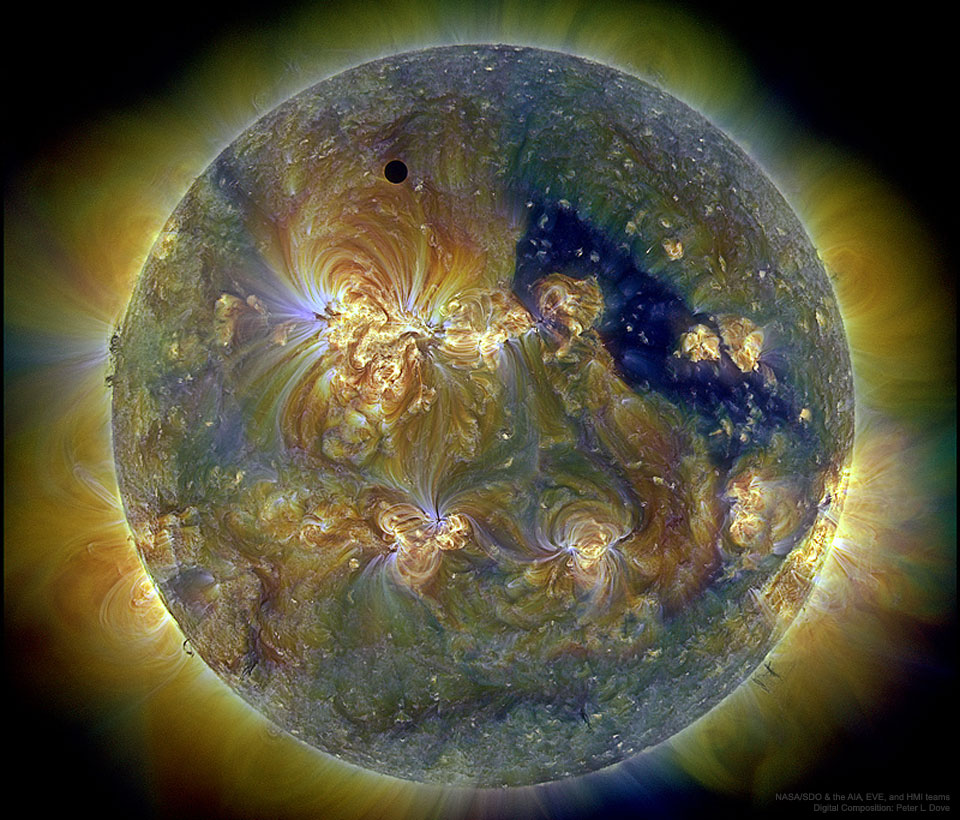2022年3月6日
Venus and the Triply Ultraviolet Sun
Image Credit: NASA/SDO & the AIA, EVE, and HMI teams; Digital Composition: Peter L. Dove
Explanation: This was a very unusual type of solar eclipse. Typically, it is the Earth’s Moon that eclipses the Sun. In 2012, though, the planet Venus took a turn. Like a solar eclipse by the Moon, the phase of Venus became a continually thinner crescent as Venus became increasingly better aligned with the Sun. Eventually the alignment became perfect and the phase of Venus dropped to zero. The dark spot of Venus crossed our parent star. The situation could technically be labeled a Venusian annular eclipse with an extraordinarily large ring of fire. Pictured here during the occultation, the Sun was imaged in three colors of ultraviolet light by the Earth-orbiting Solar Dynamics Observatory, with the dark region toward the right corresponding to a coronal hole. Hours later, as Venus continued in its orbit, a slight crescent phase appeared again. The next Venusian transit across the Sun will occur in 2117.
Tomorrow’s picture: a truth about orion
金星与三个紫外波段的太阳
影像提供: NASA/SDO & the AIA, EVE, and HMI teams; 数字合成: Peter L. Dove
说明: 这是极为特殊的日食。通常会造成太阳食缺的是月亮,不过在2012年,非常罕见的轮到金星 扮演此一角色。就如同月亮造成的日食过程,随着金星与太阳逐渐重合,金星的娥眉位相变得越来越纤细,在完美重合时,金星的娥眉状亮区完全消失,因此其位相掉到零,成为一轮横越太阳系母星的暗斑。技术上来说,这可算是金星造成的环食,只不过外围有一圈庞大无比的火之环。上面这幅摄于掩食阶段的影像里,日盘景观是由太阳动态观测卫星所拍摄的三个紫外光波段影像叠合而成,盘面右侧的暗区则是日冕洞。数小时之后,随着金星在轨道上持续前行,纤细的娥眉相复现。想要见到下一次的金星凌日,得等到2117年。
明日的图片: a truth about orion



